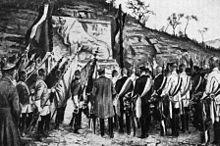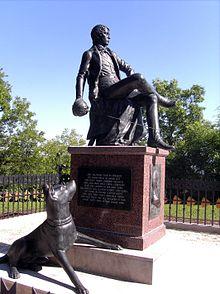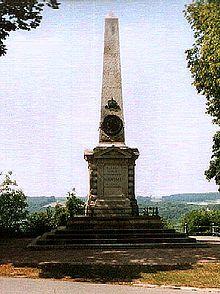

The Kösener Senioren-Convents-Verband (abbreviation: KSCV) is the oldest association of German, Austrian and Swiss Studentenverbindungen. It comprises roughly 105 German, Austrian and a Swiss Corps, all of which are based upon the principle of tolerance.
History
The KSCV was founded in Jena in 1848 and soon moved its venue to the nearby city of Bad Kösen in the northernmost German wine growing area Saale-Unstrut having its annual meetings at the nearby Rudelsburg. The Kösener monuments commemorate prestigious members of the Corps as well as the many fallen during the wars.
During the period in which the National Socialist regime of the Third Reich (Ger. Drittes Reich) ruled Germany and its territories, a majority of member corps of the KSCV (namely five member corps which refused - Corps Borussia Halle, Corps Vandalia Heidelberg, Corps Rhenania Straßburg, Corps Suevia München, and Corps Suevia Tübingen) refused to exclude Jewish members in addition to refusing to cooperate with the National Socialist youth movements, which were intended to replace the corps and other non-compliant student associations. Inevitably, this policy resulted in the forced closure and disbandment of the corps and, eventually, the KSCV. The dissolution of the KSCV was further ensured by Hitler after the May 1935 Heidelberg asparagus dinner disturbances, in which Corps Saxo-Borussia Heidelberg members had interfered with a broadcast speech by Hitler in which they sang satirical songs against the Nazis. The Hitler Youth, in particular, was a rival organization which gained supremacy as the premiere youth organization in Germany under the Third Reich.
The KSCV, which had an ambivalent relationship with the Nazi government, was reconstituted by 1950 primarily in West Germany, with fraternities from the now-Soviet-occupied East Germany relocating to the West. Upon reunification, the Eastern fraternities returned to their original locations.
Member corps
- Corps Athesia Innsbruck
- Corps Austria Frankfurt
- Corps Baruthia Erlangen
- Corps Bavaria Erlangen
- Corps Bavaria München
- Corps Bavaria Würzburg
- Corps Flaminea Leuven
- Corps Franconia München
- Corps Frankonia Prag zu Saarbrücken
- Corps Franconia Würzburg
- Corps Guestphalia Berlin
- Corps Guestphalia Halle
- Corps Hannovera Göttingen
- Corps Hansea Köln
- Corps Hubertia Freiburg
- Corps Joannea Graz
- Corps Makaria München
- Corps Marchia Berlin
- Corps Marcomannia-Breslau zu Köln
- Corps Masovia Königsberg (Potsdam)
- Corps Palatia Munich
- Corps Rhenania Heidelberg
- Corps Rhenania Tübingen
- Corps Schacht Leoben
- Corps Teutonia-Hercynia Göttingen
- Corps Transrhenania München
- Corps Suevia Freiburg
- Corps Suevia Heidelberg
- Corps Suevia München
- Corps Vandalia-Teutonia, Berlin
External links
English
- Reportage on Corps in English language (.jpg-scans only!)
German
- Official website (of the two Corps associations)
- "Corpsstudent"
- Corps in Austria

